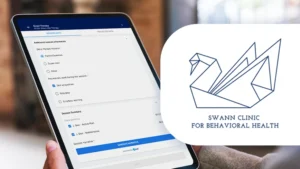Written by Rick Kubina
What’s the point of practice? Is some practice good and some practice harmful? In education, wild misconceptions abound. A quick search of the web yields a host of people stating problems with the practice.
The old “drill the skill” strategy of learning math facts was based solely on memory. Any strategy that is based solely on memory has a weak foundation.
Source: Response: Ways To Teach Math Besides ‘Drill The Skill’
What worries me, and should worry you, is what happens to children who are subjected to prepackaged curriculums. If I’d left JJ in a school that relied only on skill and drill worksheets to teach reading, I already saw what would happen – she wouldn’t be an enthusiastic reader, even a strong reader.
Source: The Case Against Skill and Drill Curriculum
“This [preparing for the tests] is all we did for the first half of the year,” Marciniak said. “Our teachers focused on nothing else. And it’s kind of hard sitting there as you’re basically drilled and lectured on nothing but this.” This kind of “skill and drill” test preparation is increasingly widespread, especially in urban and rural schools where there are large numbers of students disadvantaged by poverty and where these students too often score poorly on tests.
Source: Sustaining test score gains requires good teaching, not skill and drill
The above quotes express real frustration and concern for the outcome of students. Therefore, the objections to “skill and drill” come from a context of caring. Yet each of the quotes shows how the authors got the idea of practice wrong.
Drill, Skill and Drill, Drill and Kill, Practice
In the previous quotes, most people used the neutral term “skill and drill.” But other derivatives, such as plain old “drill,” or its pejorative sister term, “drill and kill,” evoke notions of blind, back-breaking, soul-crushing activities that lead to poor academic outcomes and terrible emotional side effects.
It makes sense on the one hand. If we took an enthusiastic, joyful, curious kindergarten student and gave them worksheets for long hours, we’d have a situation resembling forced labor, not thoughtful teaching. Parents would not want their child’s learning squashed by unrealistic work demands. Likewise, teachers do not want to ruin the youthful exuberance and spirit of inquiry.
Therein lies the problem. The terms Skill and Kill, Drill and Kill, Drill, and so forth have come to represent very inefficient, aversive practice methods. And because those methods make life unpleasant for the student, no one should use them. The logic train, however, has a flaw:
- Drill and Kill harms students.
- Drill and Kill is practice.
- Eliminate practice so we no longer harm students.
The previous deduction falls under the category of an “improper generalization.” An improper generalization contains an inaccurate statement rendering the conclusion false. Let’s review.
1. Drill and Kill harms students.
Possibly true. What exactly people mean by the term varies. When someone paints a picture of pushing students to fatigue, harsh conditions, and forced compliance, sure, let’s avoid those situations at all costs.
2. Drill and Kill is practice.
Possibly true — but Drill and Kill is a poor example of practice. Thoughtful, nurturing, and meaningful practice involves four main elements: (a) timed repetition of a behavior or skill; (b) having a quantified, time-based goal; (b) delivering performance feedback after each practice trial; and (d) engaging in a sufficient amount of daily practice (Binder, 1996; Ericsson, 2006).
Drill and Kill fails the test of good practice because it often has no time limit, lacks goals, has a stunning lack of feedback — and instead may include criticism. Additionally, Drill and Kill will ask students to practice beyond reason. We’ve made a checklist of helpful questions to ask about your practice here.
3. Eliminate practice so we no longer harm students.
Talk about throwing the baby out with the bathwater! Yes, Drill and Kill has no place in a humane, compassionate, and positive educational environment. On the other hand, an educational environment that withholds and/or completely eliminates practice oppresses true mastery and fluency of content. Can you think of any human, anywhere, at any time that has become fluent with a skill without practicing?
Conclusions
Research shows, again and again, the critical, absolutely essential need for practice in skills ranging from music and surgery to reading and problem- solving. Let’s do away with Drill and Kill and champion effective practice in all classrooms!
How has effective practice helped your learners become fluent? How have you merged practice into a packaged curriculum? We’d love to hear your stories.
References
Binder, C. (1996). Behavioral fluency: Evolution of a new paradigm. The Behavior Analyst, 19, 163-197.
Ericsson, K. A. (2006). The Cambridge Handbook of Expertise and Expert Performance. Cambridge, UK: Cambridge University Press. — review here






